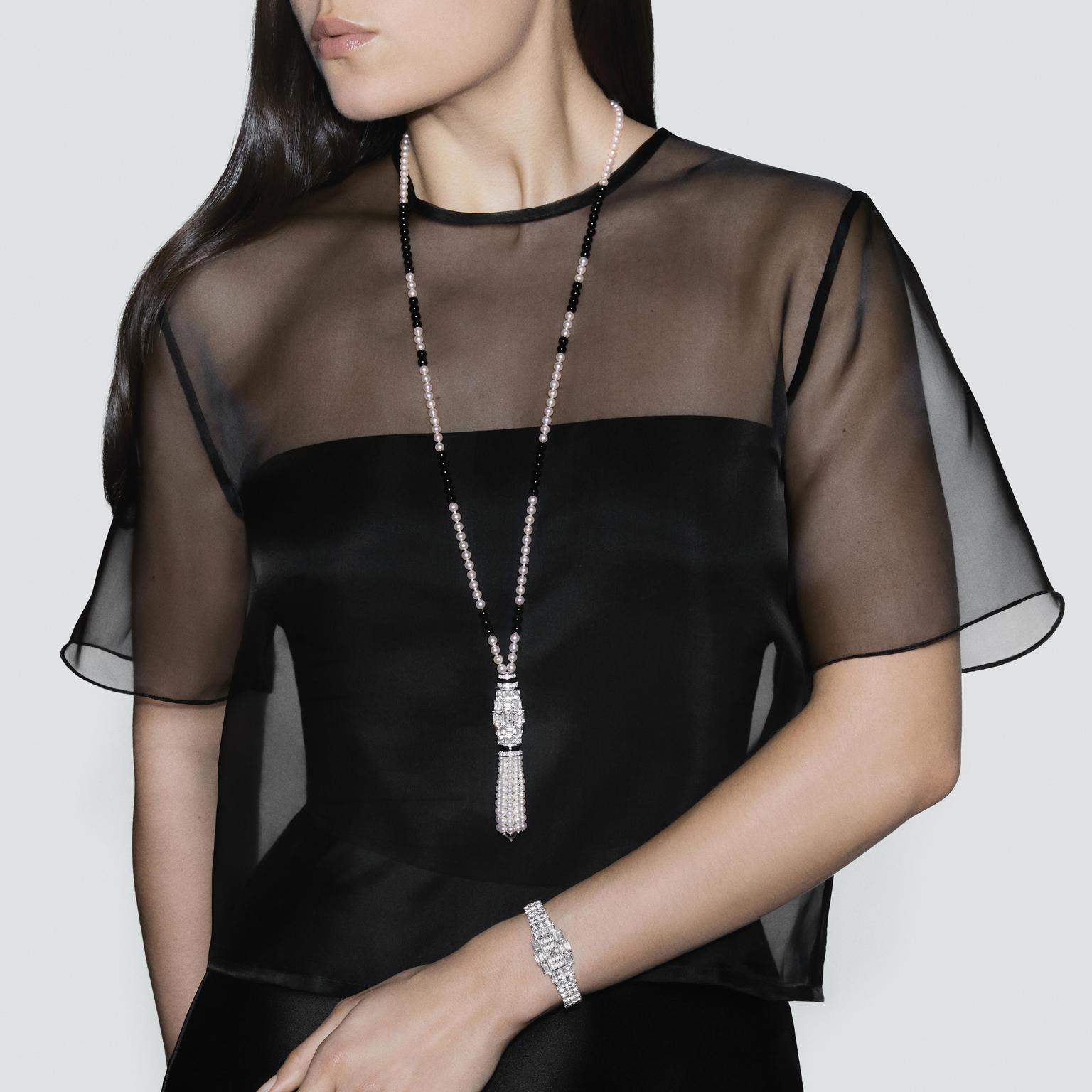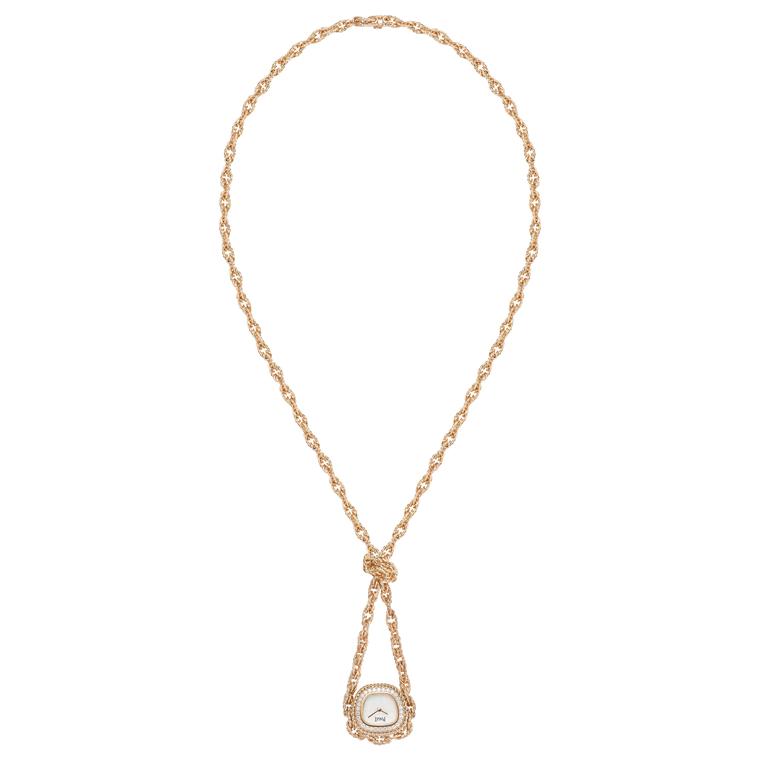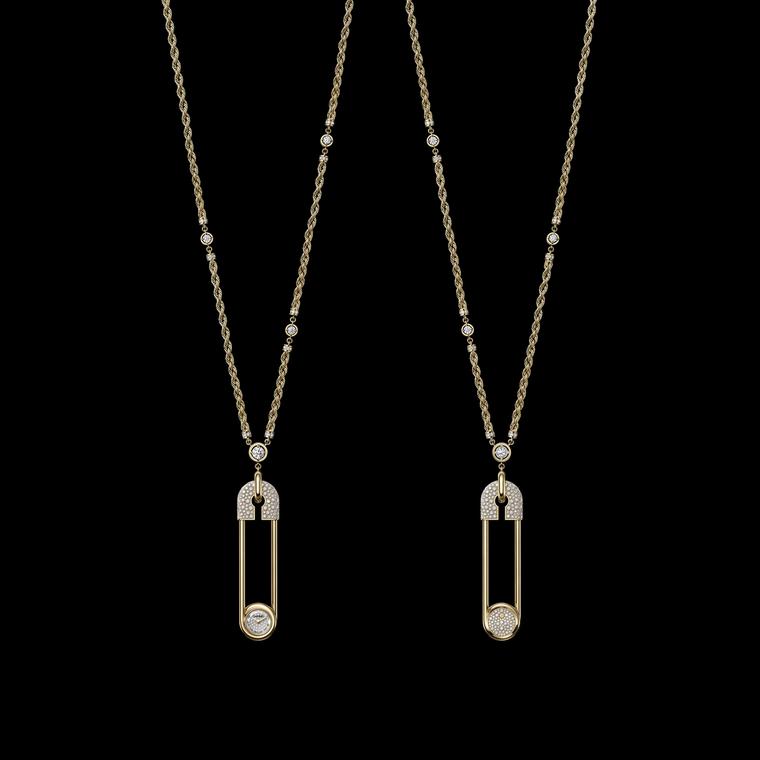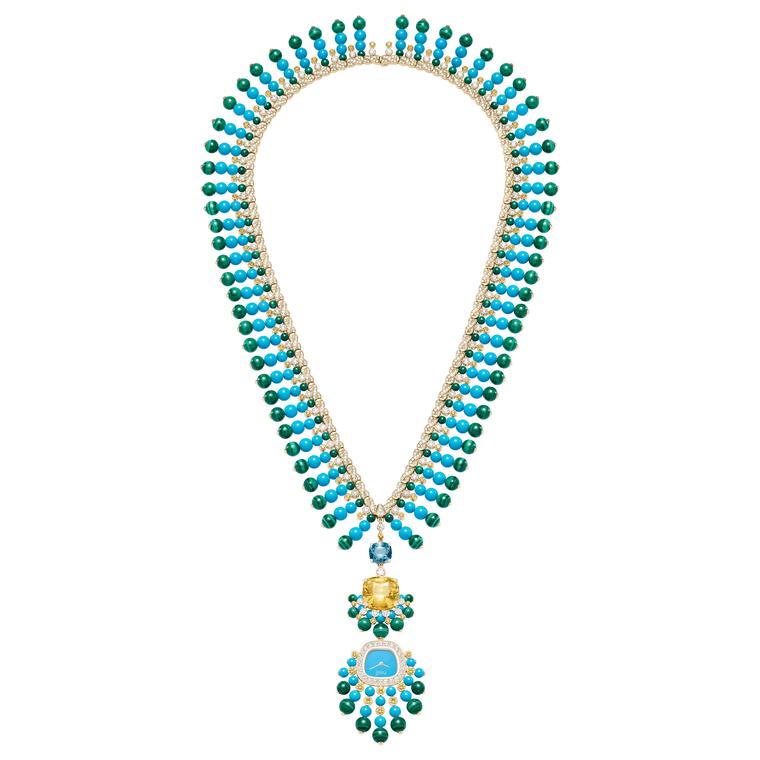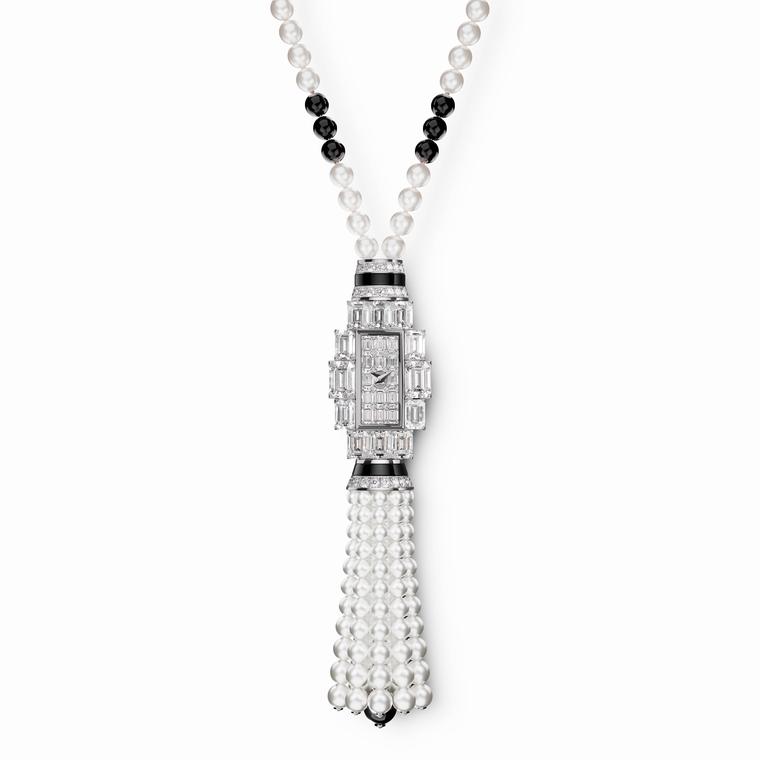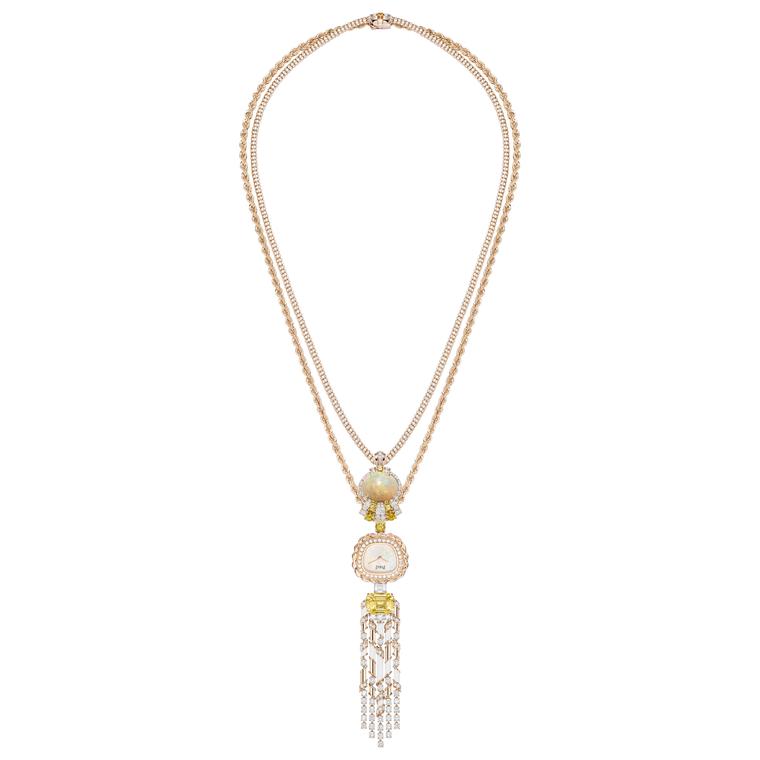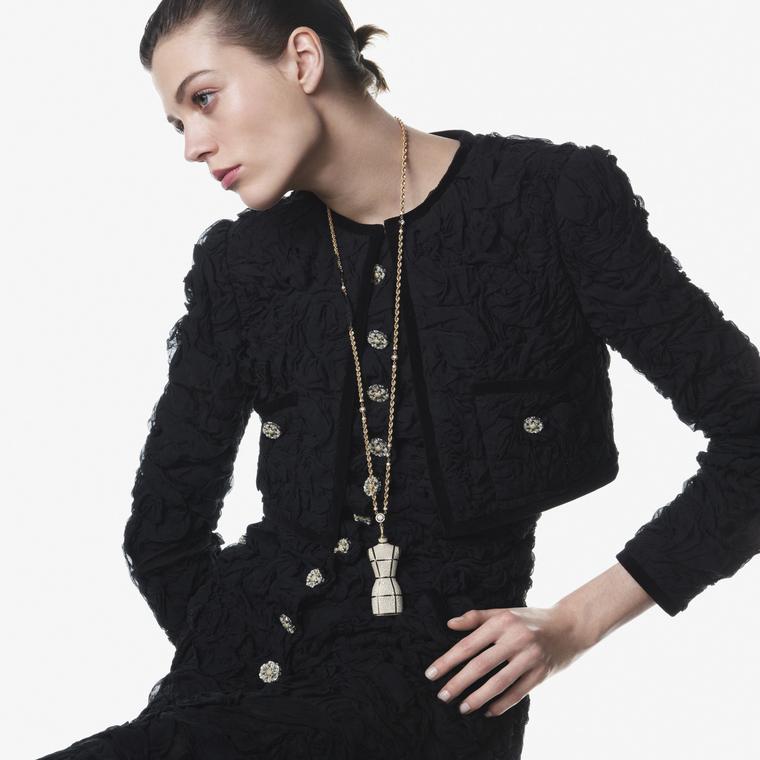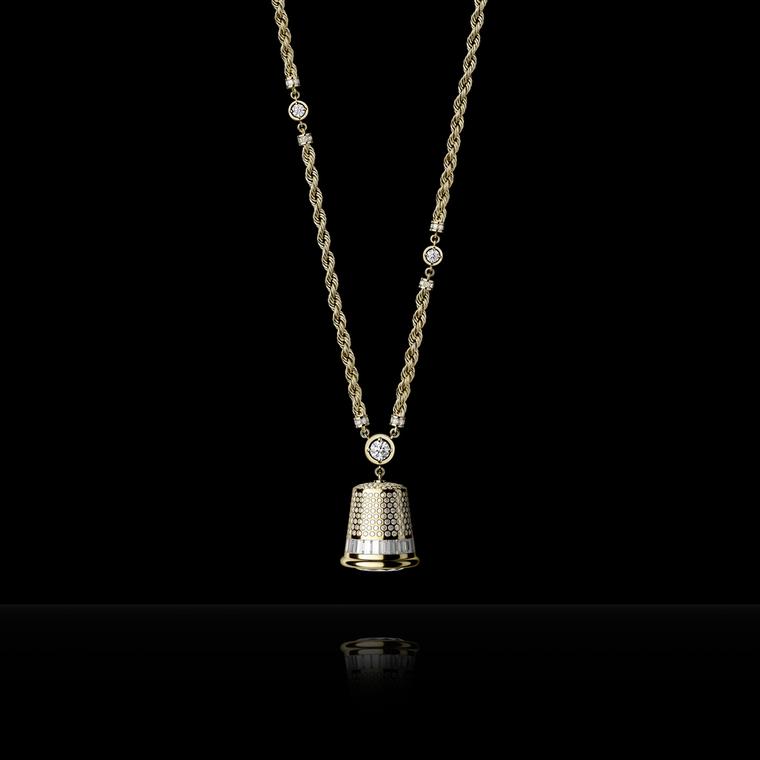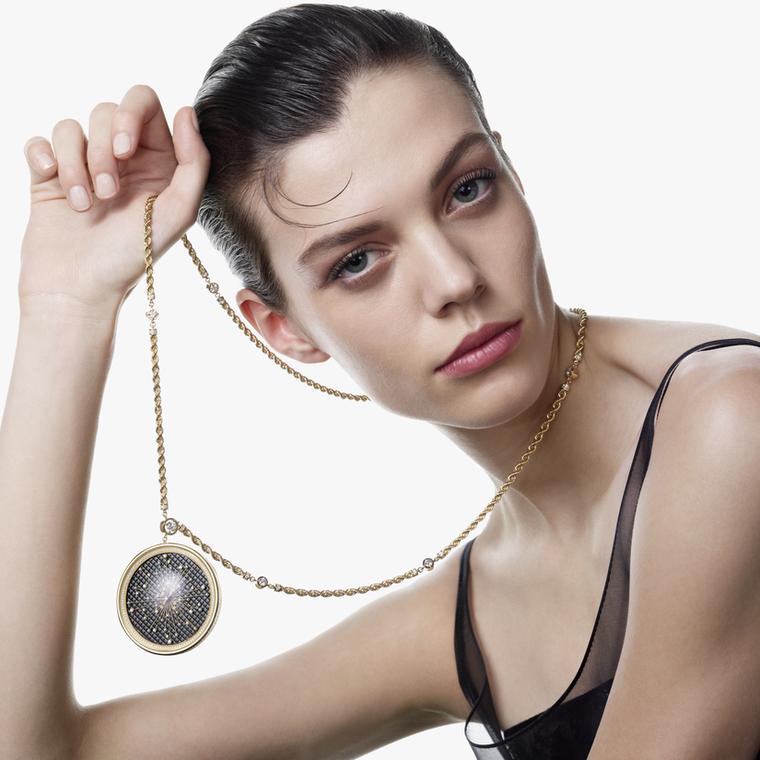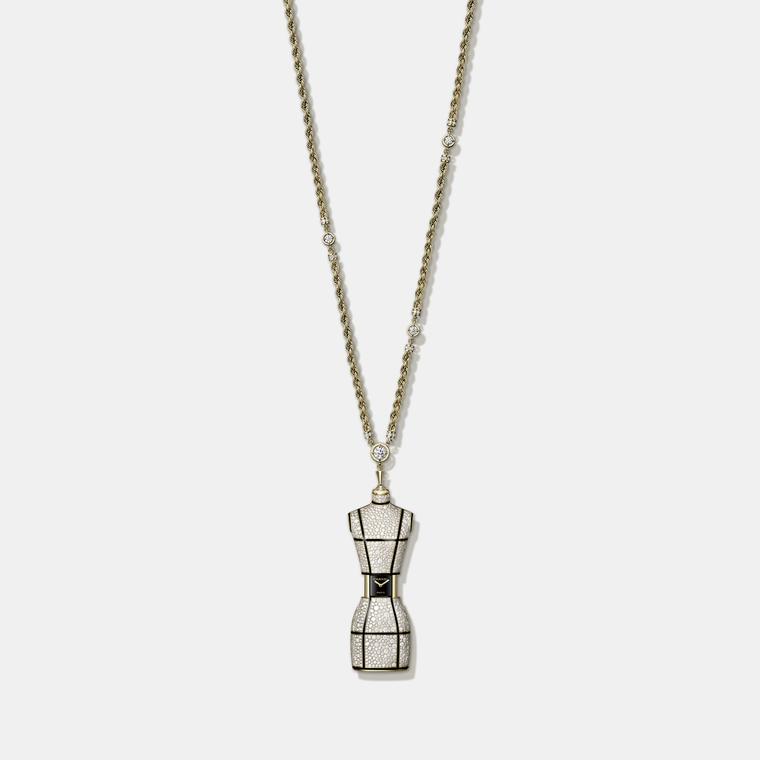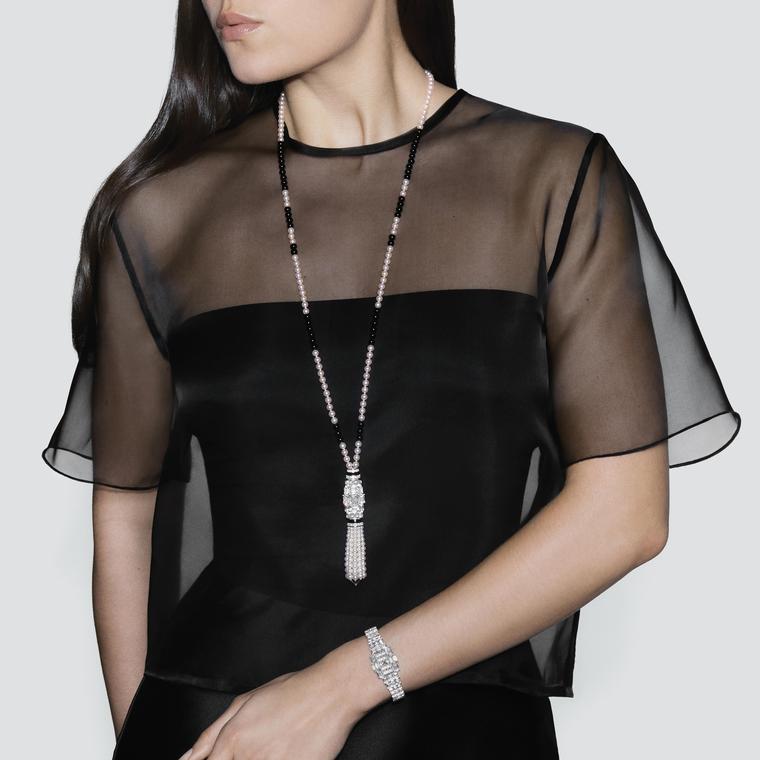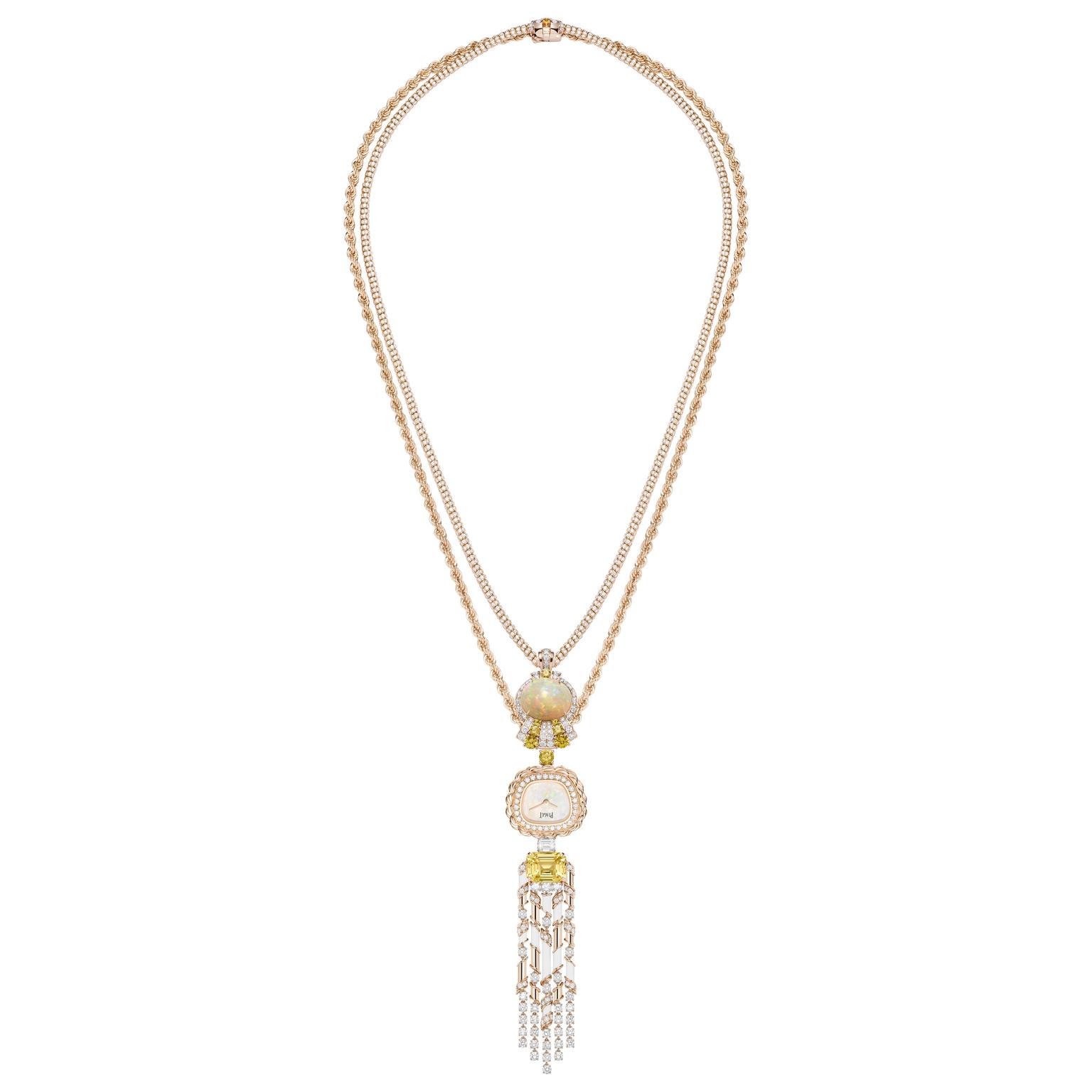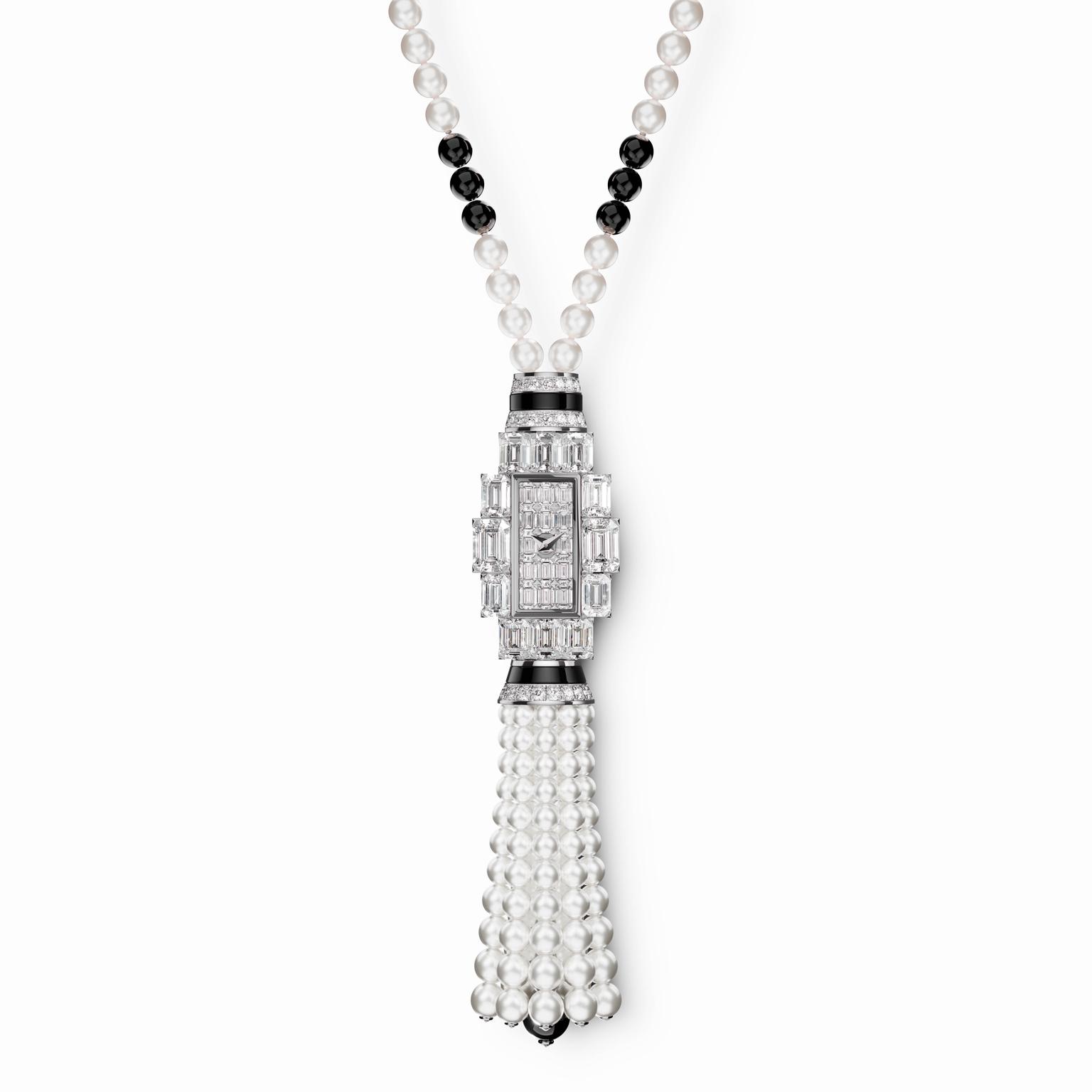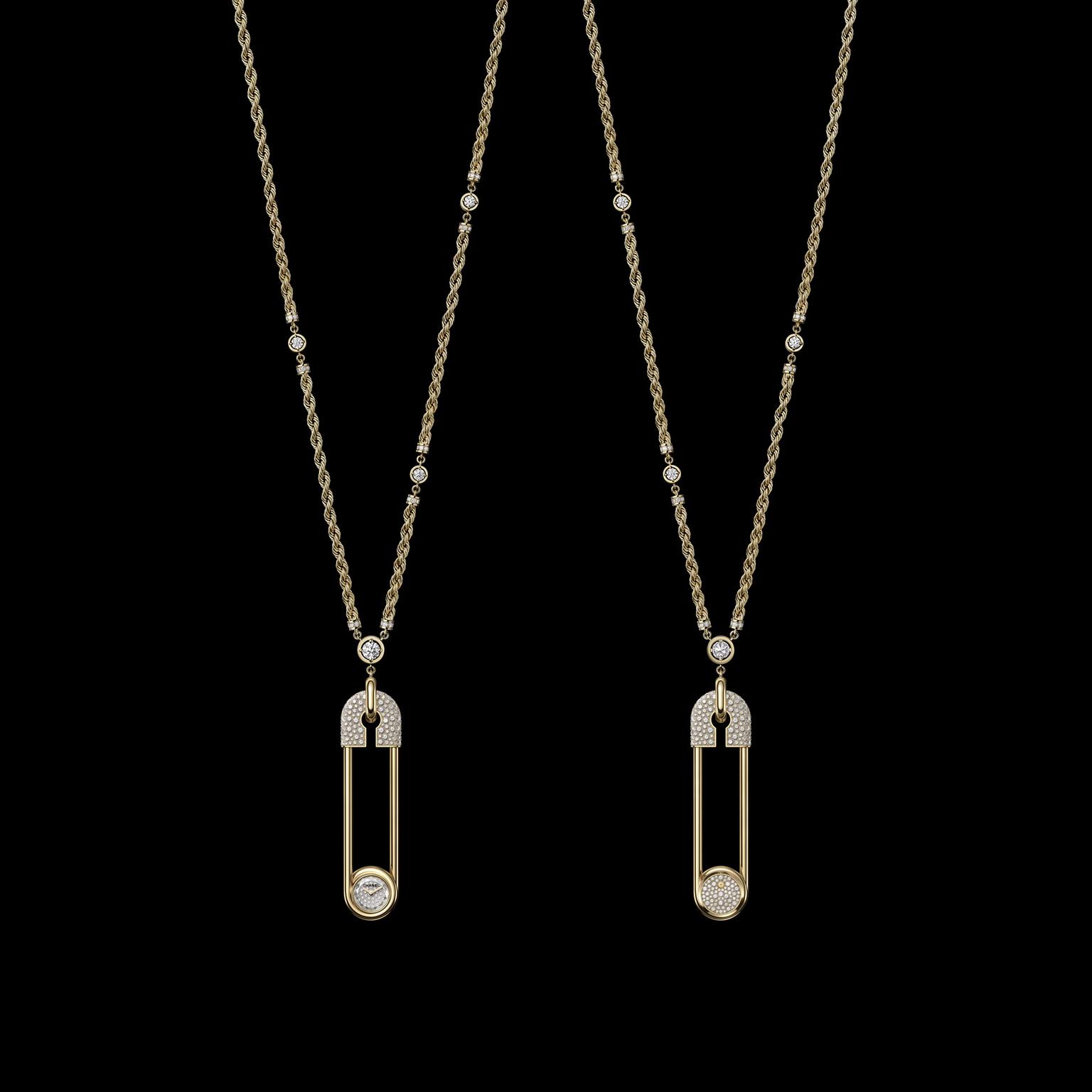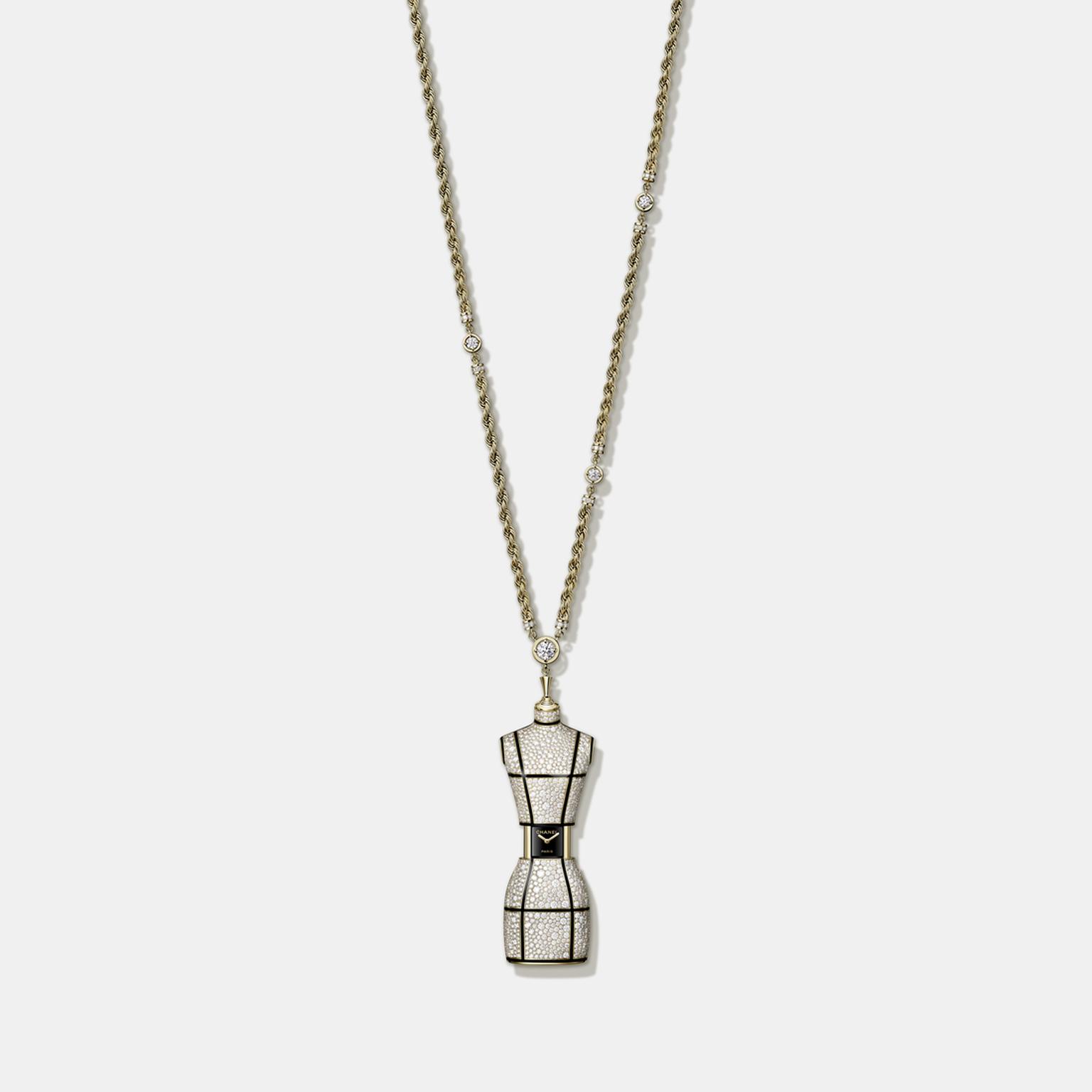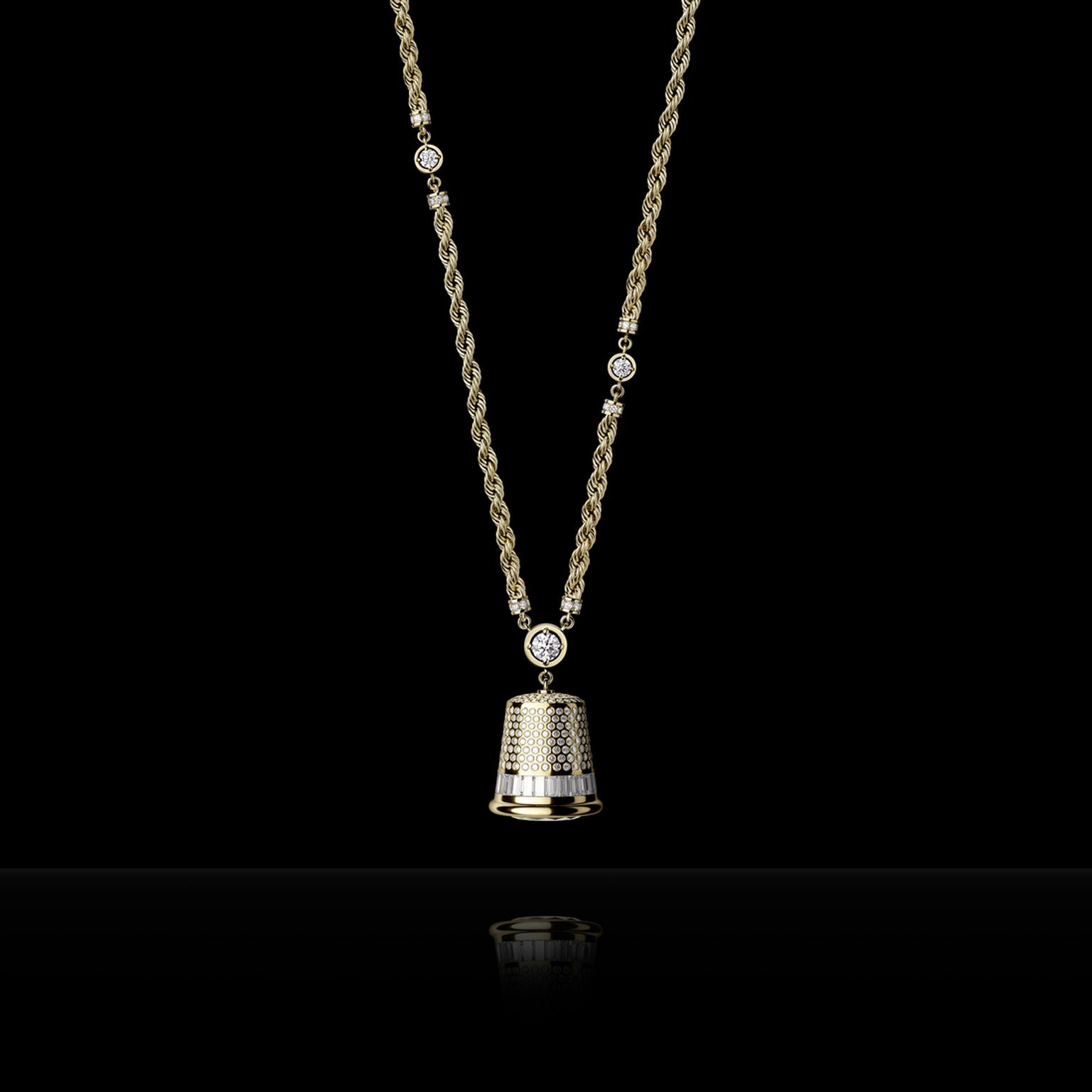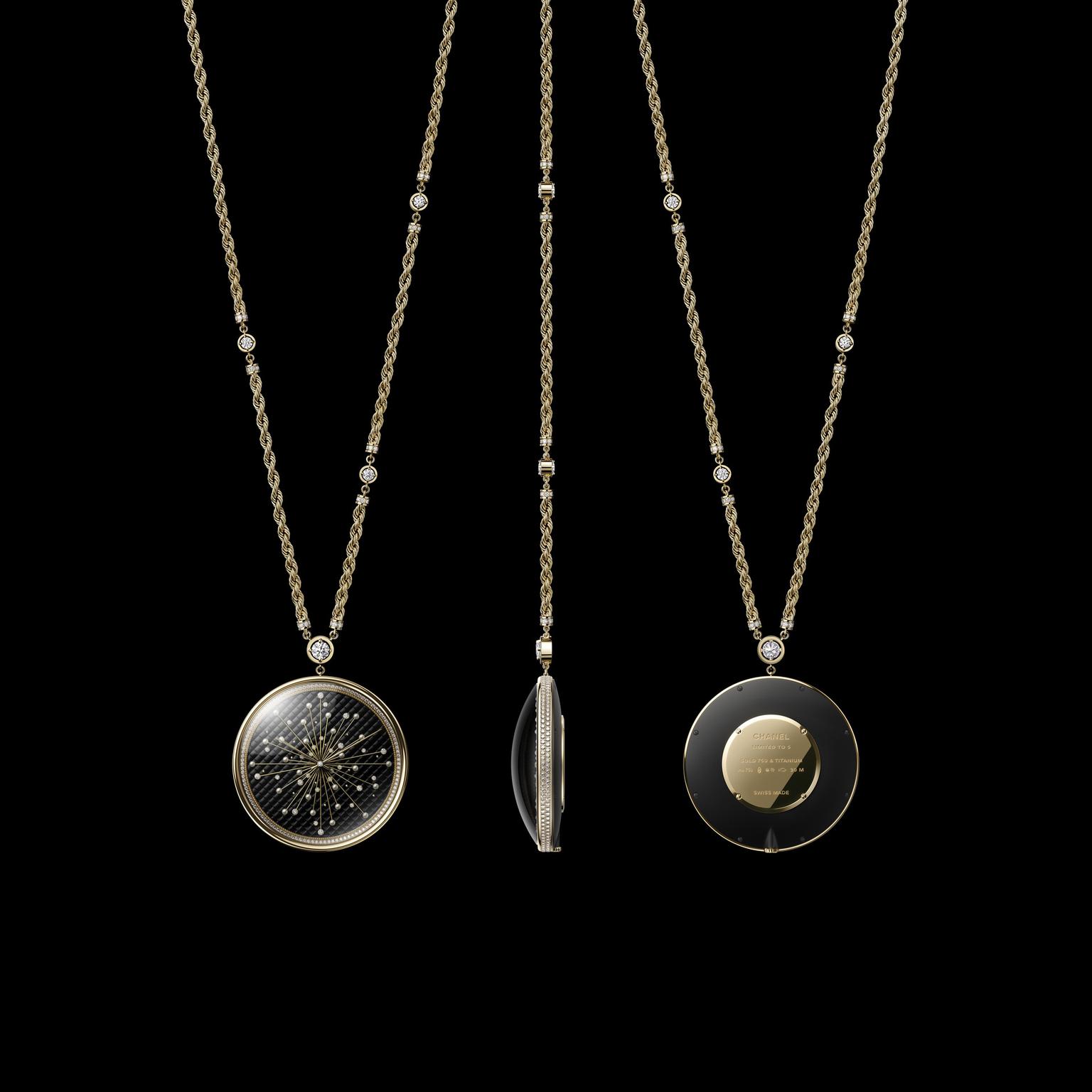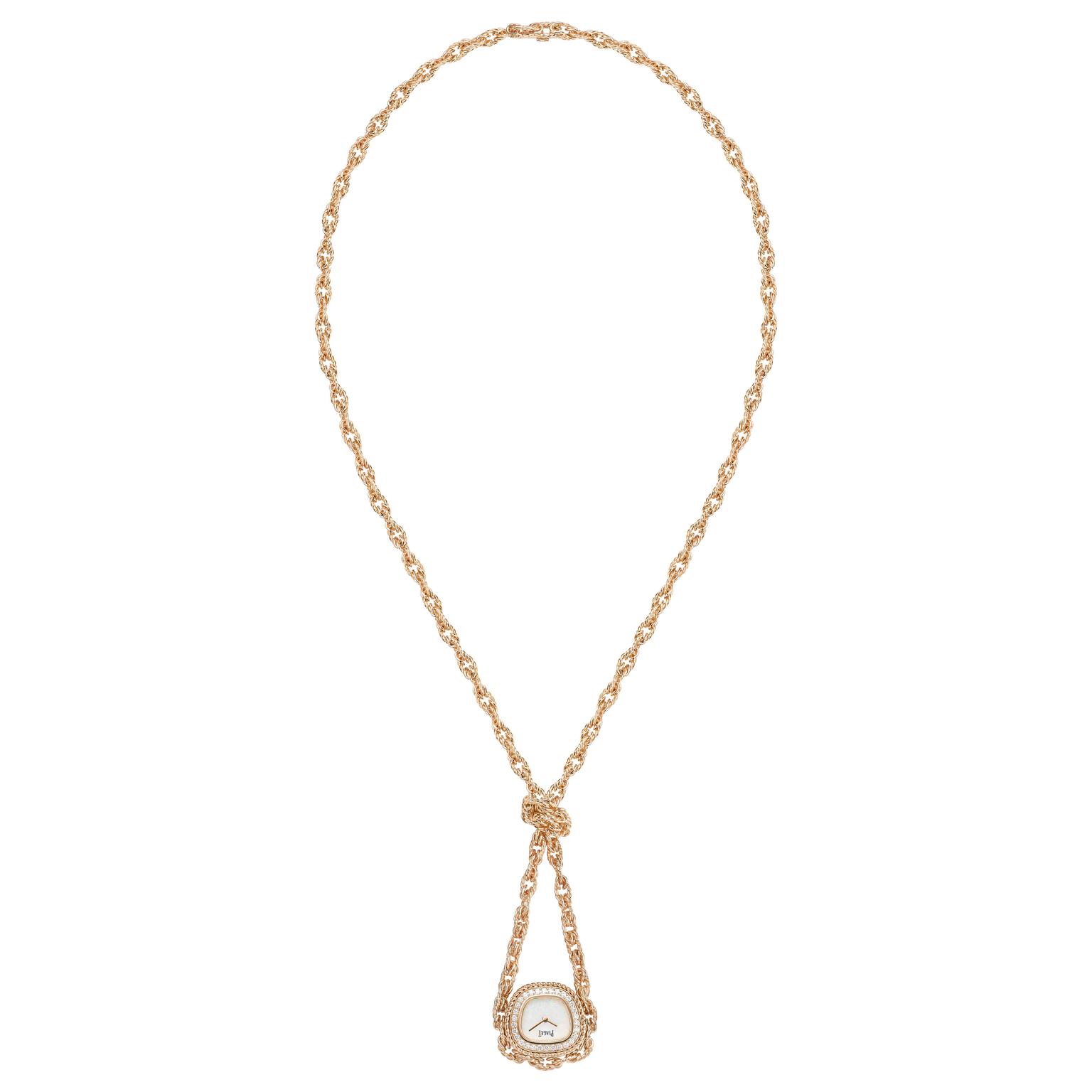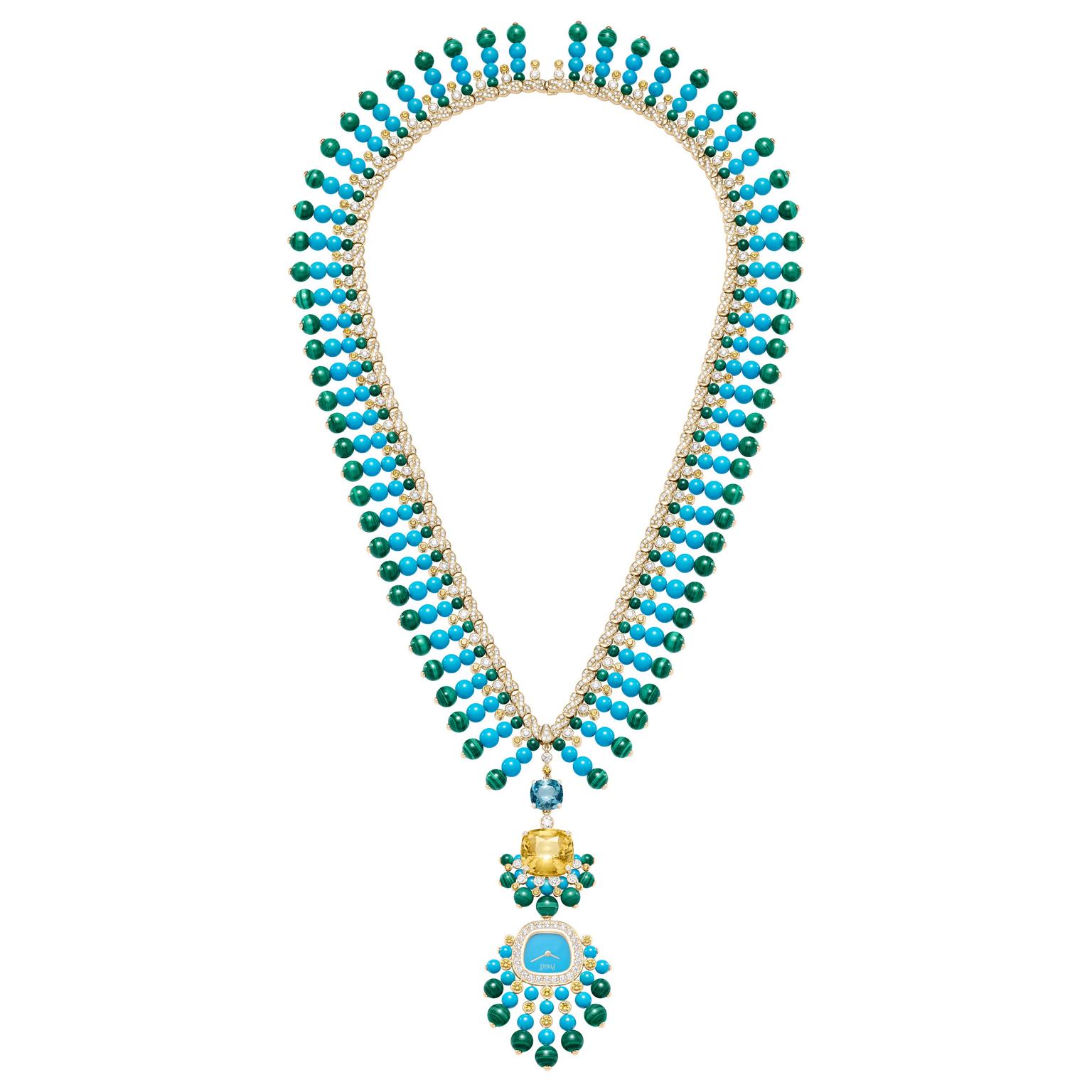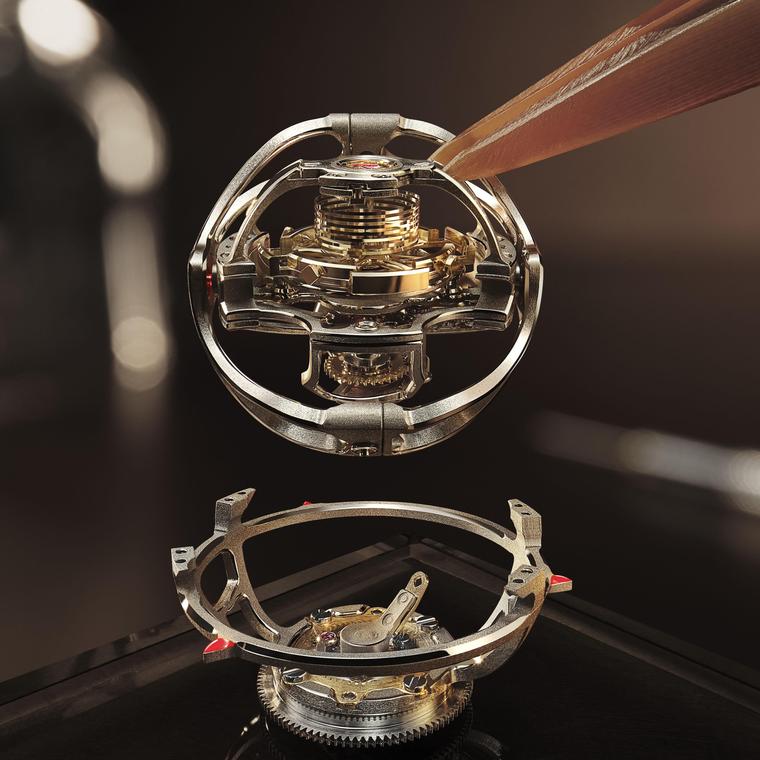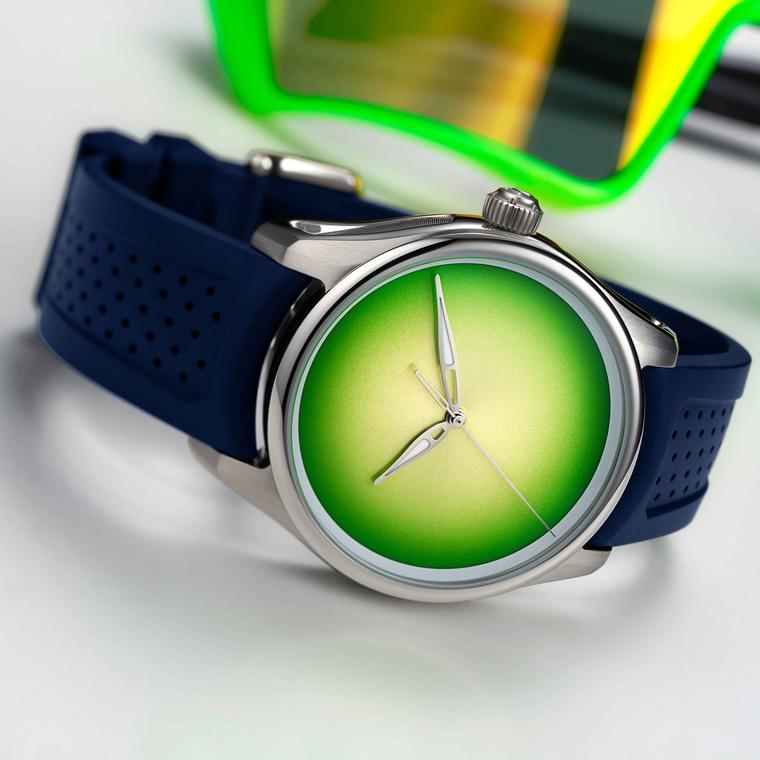In 2024 they appeared disguised as thimbles, concealed in mannequins, nestled into safety pins or placed behind pin cushions. And that was just Chanel. This swing to wearing watches as pendants was spotted at last year’s Watches and Wonders that marked the return of the sautoir. In 2023 Piaget led the way with stone dials and decadent emerald cabochons. Jaeger-LeCoultre turned its iconic sports watch, the Reverso, into a geometric delight, hanging its recognisable rectangular frame from a pink rose-gold rope fully set with diamonds, aiglets made from black onyx dangling from the end. Van Cleef & Arpels concealed dials behind delicate discs of stones such as rose quartz and blue chalcedony. Chanel, in typical style, hid theirs behind diamond-encrusted lion’s head.
This was no fashion moment – here one year, gone the next – if Watches and Wonders 2024 is anything to go by the sautoir is here to stay.
A short history of a long necklace
Sautoirs, and indeed pendant watches on said necklaces, have been around since the 17th century, becoming popular, and therefore fashionable, in the 18th century when French aristocrats started wearing them as status symbols. The name comes from the French verb “sauter” meaning “to jump” supposedly because of the way the necklace dances as the wearer moves and refers to a long necklace that can reach as far as the waist. Unsurprisingly this style had a resurgence in the 1920s with flapper girls finding them the ideal accessory for drop-waist dresses and uncomplicated necklines. In the 1930s and 1940s, the likes of Audrey Hepburn and Grace Kelly favoured a longer necklace. However, it was Piaget that really brought the sautoir back with a bang in the last 1960s with its 1969 “21st century collection” – a line of breath-taking jewels, each with a secret or open watch dial dangling from precious metal and stone chains. These were pieces that blurred the lines between haute joaillerie and haute horlogerie and were inspired not by the majesty of the Jura, but the decadence and spirit of experimentation displayed on the catwalks of Paris. It was Piaget who coined the moniker “Swinging Sautoirs” a reference to the relative freedom of the time mirrored in the free-moving, seductive style of pendant.
Sautoir in style
If 2023 was the return of the sautoir, 2024 is the year it went “core collection”. Chanel really leaned into the playfulness inherent in this design. Using the accoutrements of Mlle’s atelier as a starting point, it transform everyday tools into precious-metal confections. Watch dials were sequestered behind pin cushions recreated in gold, diamonds, mother of pearl and onyx. They nestled in the waist of a tiny mannequin, whose figure is fully snow-set. A tiny dial was even placed in the base of a brilliant-cut encrusted thimble and squirreled away in the loop at the base of a safety pin. There were lions, of course, this is Chanel after all, but the to take the practical and make it precious is both witty and whimsical.
Piaget swings in
Piaget had a peek through its back catalogue for inspiration for a trio of sautoirs to celebrate its 150th anniversary. The crowning glory of the collection being an Aztec-esque riot of turquoise and malachite, interspersed with yellow sapphires and brilliant-cut diamonds. This culminated in a jaw-dropping 29.24ct Sri Lankan yellow sapphire and a 6.11ct aquamarine, from which the watch with its softly rounded trapezoid case is suspended; a dial that can be removed and worn on the wrist on a green satin strap. Somewhat less dramatic, but not by much, is the design with two gold chains, one set with diamonds, where, at its apex hangs a 11.68ct white opal cabochon fringed with white and yellow precious stones from which hangs another detachable dial. In a flourish of utter decadence, there another tassel of diamonds, gold and chalcedony that dances enchanting beneath the dial. Far simpler is the final member of the trio – an elegant pendant watch on a handcrafted gold chain inspired by a piece from the archives.
A final flourish
Also bringing back designs from the archives, Vacheron Constantin revived its Grand Lady Kalla. When the Kallista was launched back in 1979, it was not just notable for being the most expensive watch in the world at the time, but for the 130cts of diamonds anchored to a solid gold ingot of a case, which caused the stones to flow down the case in a shimmering river. The Kalla – smaller and aimed at women – followed a year later and it is this that Vacheron Constantin has resurrected by this time as a piece that can be worn in multiple ways, including on a sautoir. When the watch is on its diamond-set bracelet, the sautoir is adorned with a platinum pendant set with rubies, emeralds, onyx, and diamonds, which, when replaced by the dial, can be worn as a brooch. The sautoir itself features onyx and diamonds, while the watch has a tassel of Akoya pearls of superlative lustre.
As 18th century French aristocrats understood, sautoirs are status symbols; they are the antithesis of quiet luxury – their movement makes them noticed, the abundance of precious stones creating a play of light. They are, without doubt, the epitome of “look at me” jewellery, because sometimes keeping quiet is no fun at all.


